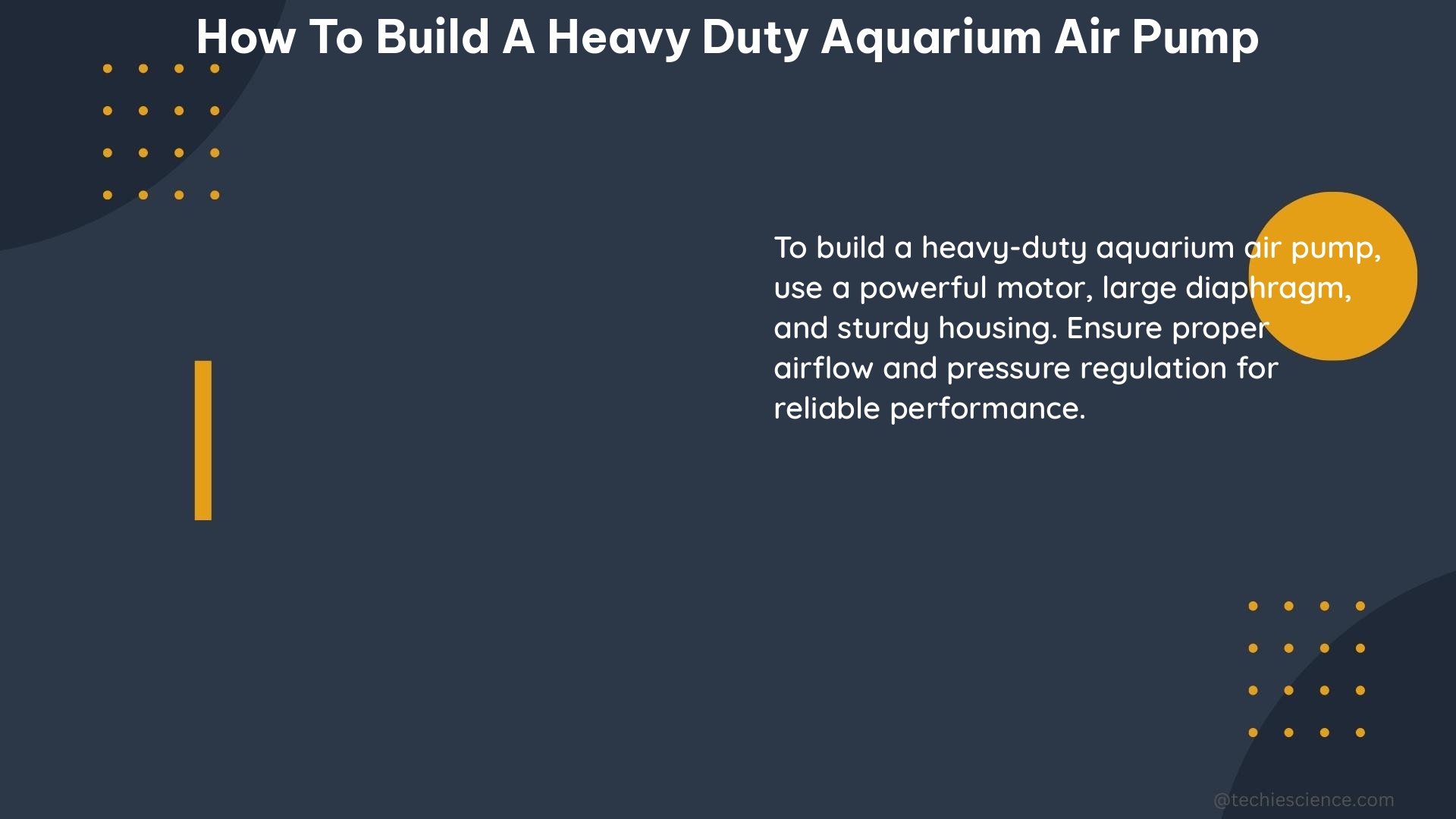Building a heavy-duty aquarium air pump requires careful consideration of various technical factors, including airflow rate, pump type, number of outlets, airline size, power consumption, and noise level. This comprehensive guide will provide you with the necessary steps and specifications to construct a robust and efficient air pump for your aquarium setup.
Determine the Airflow Rate
The airflow rate is the volume of air that the pump can deliver per unit time, typically measured in liters per minute (LPM) or cubic feet per minute (CFM). To determine the required airflow rate for your aquarium, you need to consider the number of tanks and the type of filtration system you are using.
For example, if you have 16 fish tanks, each with a sponge filter requiring 5 LPM, you will need an air pump with a minimum airflow rate of 80 LPM. However, it is recommended to have a higher airflow rate, such as 100 LPM, to ensure adequate water circulation and filtration, especially for larger aquarium setups.
Select the Pump

Once you have determined the required airflow rate, you need to select a pump that can deliver the necessary airflow. You can choose between a diaphragm pump or a piston pump, depending on your preferences and budget.
Diaphragm Pump:
– More expensive but more durable and quieter than a piston pump
– Uses a flexible diaphragm to move air, reducing wear and tear and noise
Piston Pump:
– Less expensive but noisier and less durable than a diaphragm pump
– Uses a piston to move air
When selecting the pump, consider factors such as the pump’s maximum airflow rate, power consumption, and noise level. For a heavy-duty aquarium air pump, a diaphragm pump with an airflow rate of 80-100 LPM and a power consumption of 10-30 watts would be a suitable choice.
Determine the Number of Outlets
The number of outlets depends on the number of tanks and the type of filtration system you are using. It is recommended to have at least one outlet per tank to ensure adequate water circulation and filtration.
However, the manufacturer of the pump may recommend a higher number of outlets to reduce the pressure and ensure the longevity of the pump. For example, for an 80 LPM pump, the manufacturer may recommend a manifold with 70-80 outlets to reduce the pressure and extend the pump’s lifespan.
Select the Airline
The airline is the tube that connects the pump to the outlets. The airline should be made of durable and flexible material, such as silicone or vinyl, to ensure longevity and prevent leaks.
The airline size depends on the airflow rate and the number of outlets. It is recommended to use a 4mm airline for each outlet to ensure adequate airflow and prevent pressure drop.
Assemble the System
Once you have selected the pump, the outlets, and the airline, you can assemble the system. Follow these steps:
- Connect the pump to the outlets using the airline.
- Connect the outlets to the tanks using the airline.
- Plug in the pump and adjust the airflow rate using the pump’s control knob.
Technical Specifications
Here are the technical specifications for a heavy-duty aquarium air pump:
| Specification | Value |
|---|---|
| Airflow Rate | 80-100 LPM |
| Pump Type | Diaphragm or Piston |
| Number of Outlets | 16-80 |
| Airline Size | 4mm |
| Power Consumption | 10-30 watts |
| Noise Level | < 40 dB |
| Weight | 1-5 kg |
By following these steps and adhering to the technical specifications, you can build a robust and efficient heavy-duty aquarium air pump that will provide the necessary airflow and water circulation for your aquarium setup.
References:
– Sizing Up Large Air Pump for Fish Room
– Is There a Relatively Inexpensive Way to Measure Airflow?
– How to Build a DIY Aquarium Air Pump
